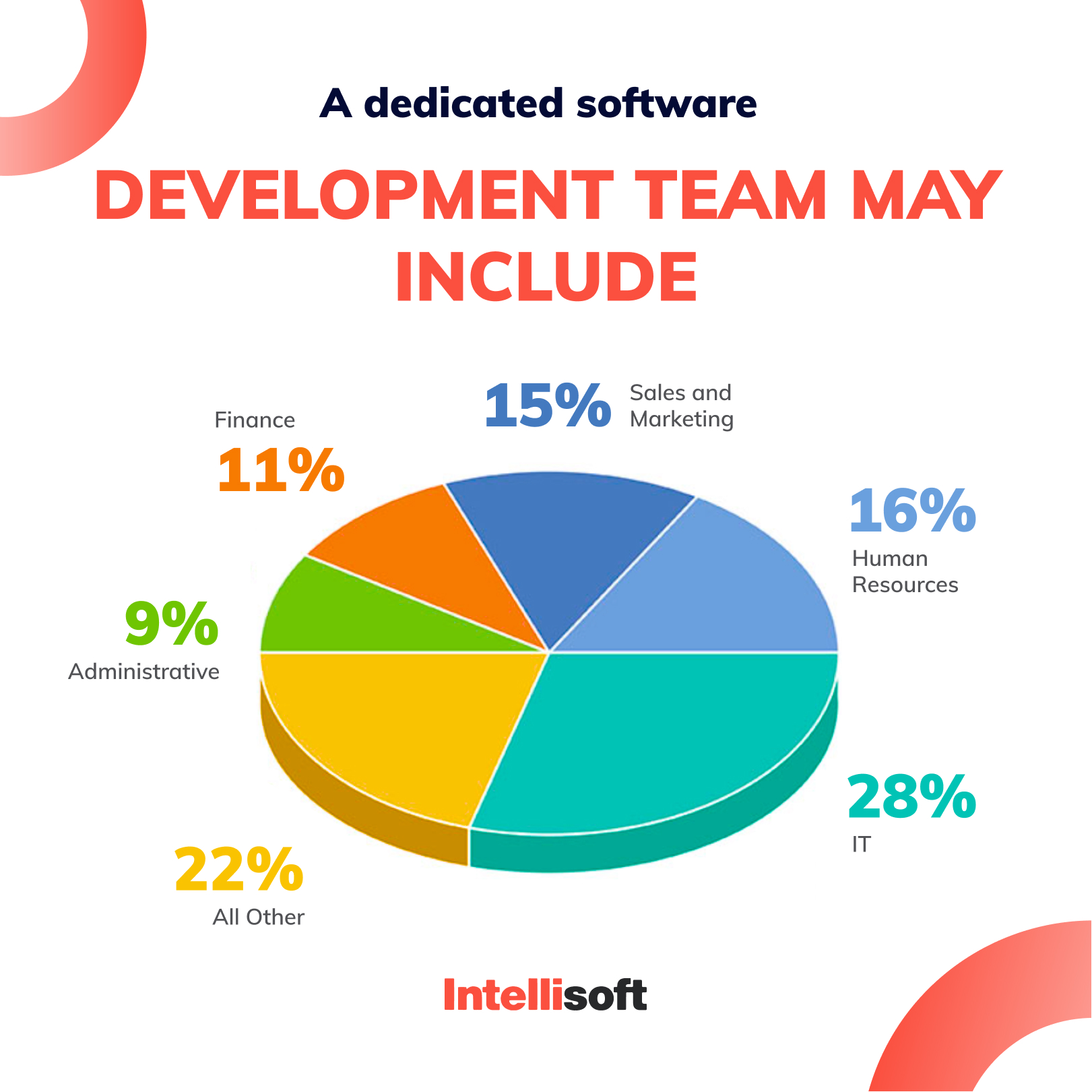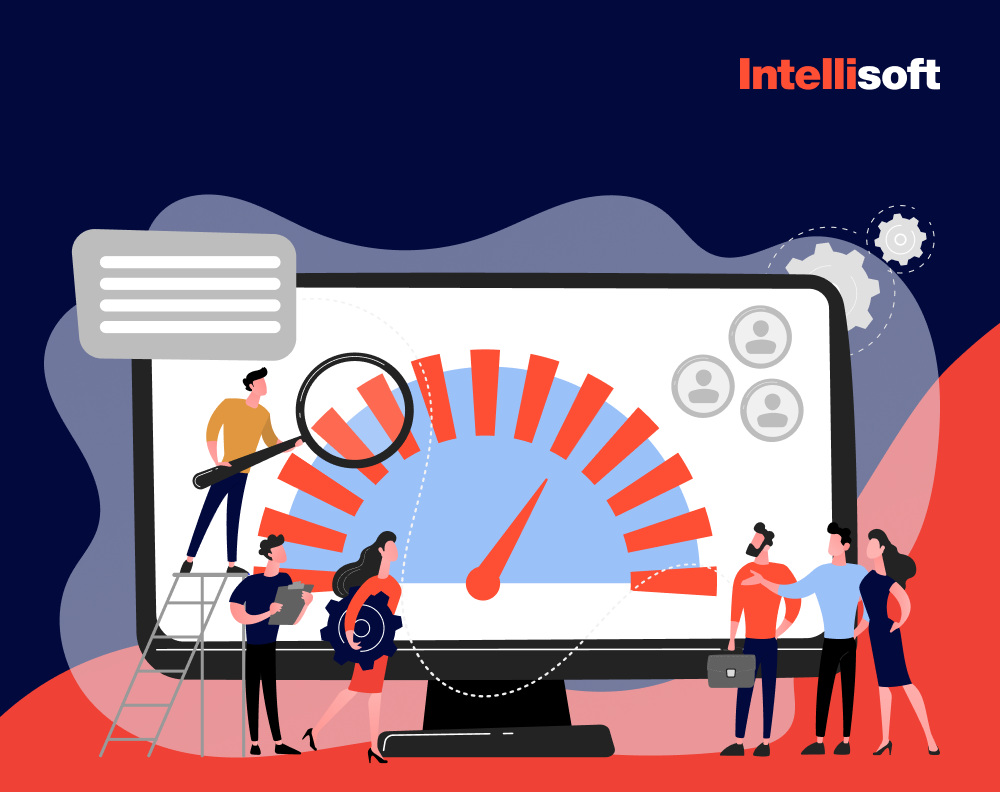Navigating the world of software development can be a daunting task, especially if you’re not technically inclined. Many product owners find themselves in a bind when it comes to changing a development team or company mid-project. It’s a common dilemma: figuring out the right time and way to make such a critical change.
Understanding the basics of the software development life cycle is essential. This knowledge not only helps bridge any gaps in development but also ensures you make informed decisions about selecting the best remote software development team.
Several red flags might indicate it’s time to consider a change. These include unclear project management and objectives, which can lead to delays, increased budgets, frustration, and stalled progress.

You may wonder, “Should I change my dev team in the middle of a project?” At IntelliSoft, we are here to solve this problem. With our guidance, you can navigate these changes smoothly and effectively, ensuring your project stays on track without unnecessary turmoil.
Table of Contents
Common reasons to change software developers
Even the best software developers can sometimes face the possibility of a client wanting to switch teams. This decision often stems from a variety of compelling reasons, chief among them being dissatisfaction with the current service. Common issues include delays in reaching important milestones and frequent miscommunications. These problems are particularly prevalent among clients who outsource their IT needs to software development companies. Additional factors to change dev team include the following.
Weak Plan
As you know, the best impromptu is a planned impromptu. Many project participants (including the owners) rush into a complex project without expertise and background. They’ve done similar projects but have never dealt with the specific nuances. For instance, a development team used to create brilliant e-stores using WordPress, but now they have to work with Weebly or Wix for some reason.
So, we have 20% agreement versus 80% uncertainty, which leads to obvious problems.
Blurred Requirements
Well-formed expectations can at least reduce the likelihood of failure by the middle of your project if you don’t cut it at all.
We often disagree on the details and expectations of the project with each other. The client formulated the desired product vision, and the developers carried out the order according to the algorithm. However, no one agreed on the details and wishes. No one stipulated possible problems and ways of solving them. This usually leads to severe problems.
Savings on Performers
Let’s be honest: good work doesn’t come cheap. There are a lot of software companies and freelancers that offer cheap services, but such a saving has some pitfalls:
- Insufficient qualifications
- Loss of budget
- Legal or regulatory problems
- Vague client policies
One way or another, one or more of these factors become the same sticks in the throat that negate all your efforts to create a successful project.
How to Understand That It Is Time to Switch to Another Team
Someone will say that it’s time to change the software development company right away when you see that the current performers are not coping with it. Someone may advise not to rush and optimize the technical assignment, as well as instruct the team composition once again.

Finally, the main question is, “Is your problem a misunderstanding with the current performer? Or maybe, is it the absence of their ability to deal with your project or parts of it?” The second case can be the starting point in your team transformation or replacement.
Switching between teams requires the same thorough approach as preparing a project from scratch. It is even more complicated because you have to hire a new dedicated software development team to complete something for the already existing model and add new features, which could be a headache. Thus, change development teams smoothly and carefully in three steps.
What to Know Before Changing Developers
Changing development teams is not a decision to be taken lightly. It requires a thorough understanding of your current team’s strengths and weaknesses, as well as a clear vision of what you expect from the new team. Before making any changes, consider the following:
- Identify the specific problems or challenges you are facing with your current team.
- Evaluate the skillsets and expertise needed for the successful completion of the project.
- Assess the impact on project continuity and knowledge transfer.
- Consider the potential costs and time required for onboarding a new team.
Gaining a deep understanding of these factors will help inform your decision-making process and mitigate potential risks associated with changing developers.
Furthermore, it is crucial to communicate openly and transparently with both your current and prospective development teams. Clearly outlining the reasons for the change and setting expectations from the outset can help foster a smoother transition. This communication should include discussing project timelines, deliverables, and any specific requirements or preferences you have for the new team.
Step 1: Terminate the Development Partner
Many startups who have had experience with mid sprint switching took these three main points, which led them to success.
Current Features
Whatever one may say, keep on coordinating the completion of some small functions with your previous staff. This will save time for new developers (and your money, accordingly). In the end, you can always instruct a new performer to re-write some parts of the code if the old one turns out to be of poor quality.
Transmitting Documents
Instruct your current performers to write the transmitting document. This will help you set a clear target for your new members as soon as you recruit them. This could include:
- Comments to the code
- Description of solutions
- Points of failure and bugs
- Weak points that need special attention
- Notes on architecture
It’s much better than conducting hours of research again and looking for hidden errors.
Step 2: Prepare for New Developers
Now, prepare the work area for your new hires. You have to explain to them the essence of the task and the project nuances. Make a layout or diagram where you will show:
- The market and your business position in it
- Your project’s current problems
- Optimal solutions
- Description of the business model
An indication of the general lines and main points will be enough. There is no need to go into details.
Next, you need to divide your work strategy into several main points:
- Cons and mistakes that previous performers made
- Information about upcoming tasks: what are you going to launch, change, etc.
Remember to focus on your project and start with the items that need immediate attention and action.
Step 3: Hire a New Team
You realized your mistakes, created a new plan, defined new ways of development — it’s time to hire qualified performers. Of course, you don’t want to get burned again, which means it’s time to change your approach to hiring developers and, perhaps, some approaches to managing teams.
Technology Stack Is a Top Priority
It is also often the main problem when switching between teams. You need specialists who work in your technology stack. Such a development team helps you save time, avoid transferring your project to another language and handle other possible problems.
When dealing with an outsourcing company, check this factor on its website or with the contractor during the interview.
Exploration and Selection
If your goal is to change the development team to the descent, honest developers who will never cheat and do their best to deliver the project on time, a few simple tips will help you:
- Scan the potential performers. Find their social media accounts, talk to former clients (if possible), explore previous cases and portfolios, and search for more info on reputable review sites.
- Discuss their business model. Any credible company always has a transparent scheme of work, prices, and payment procedures.
- Request a contract. Official agencies and performers can always provide an agreement with clear conditions.
Take a Closer Look and Evaluate Situation
Starting to change your project with small tasks assigned is the best strategy. It will help you check the quality of work, estimate the amount of time required, as well as the volume. Do not forget to consult with your future team: this will prevent you from difficulties in the future, especially with large volumes.
Let your new contributors examine the source code and make small changes if needed. They will examine the code to understand your project. You, in turn, will be able to evaluate their work.
Related Readings:
- IT Offshore Outsourcing Pros and Cons: Should You Choose It?
- How Nearshoring Is Filling the Gap of Software Developers
- 10 Best Countries for Hiring a Dedicated Development Team
- IT Sourcing in Ukraine: The Best Hiring Strategies
- How to Extend Your Software Development Team: Trends and Hints 2021-22
Meet New Changes
Now that you have already assembled a new dev team to change your approach and generated an updated strategy, you only need to control the process to create a new successful scenario. Just follow your intuition, common sense, and a few simple rules:
- Watch for updates
- Contact the developer
- Track the changes
- Block access for previous employees
- Request or conduct a code review on your own
Routine diagnostics will give you a better chance of a successful product release. On the other hand, you can fully rely on the assigned project manager.
What Team is the Best Software Development Team?
To ensure the smooth development of your business software, it’s crucial to choose the right software development company wisely. Here are some key factors to consider when selecting the perfect team for your project:
Alignment with Business Goals
It’s essential to hire software developers who not only understand your project’s technical requirements but also grasp the broader business objectives. This ensures that every feature and functionality built aligns with the ultimate goal of the software, whether it’s to improve operational efficiency, increase user engagement, or drive sales.
Expert Team Composition
The composition of your software development team should include experts who specialize in the relevant domains and technology stacks required for your project. This includes professionals well-versed in specific programming languages, platforms, and frameworks that are crucial for your software. Having such experts on board enhances the quality and efficiency of the developed software.
Technical Expertise
Experience in software development can significantly impact the project’s success. Experienced developers are likely to foresee potential issues and tackle them proactively, ensuring a smoother development process. They can leverage their past learnings and best practices to navigate complex project requirements and deliver high-quality solutions.
Strong Communication and Portfolio
Effective communication is critical in software development. Ensuring that your team communicates clearly and regularly can prevent misunderstandings and keep the project aligned with its goals. Additionally, reviewing the team’s portfolio gives insights into their capability and the quality of work they can deliver. A strong portfolio often indicates a proven track record of handling diverse projects successfully.
Curiosity and Enthusiasm
Developers who are curious and eager to learn tend to bring innovative solutions to the table. A team that asks questions and shows enthusiasm for your project is more likely to be engaged and committed. This attitude not only helps in building a better product but also fosters a proactive problem-solving environment.
Scalability
The ability to scale the development team according to the project’s evolving requirements is crucial. Whether you need to ramp up the team size to meet aggressive timelines or scale down to optimize costs, the flexibility to adjust the team dynamically can greatly influence the project’s adaptability and cost-efficiency. Make sure the development company can accommodate these changes without compromising on the quality or pace of work.
Verdict
Deciding to switch developers mid-project is never easy, but knowing when to move on is crucial. If your current development team doesn’t meet your expectations and affects your app’s potential, it might be time to consider a change.
Are you dealing with a developer who’s gone silent, or perhaps you’re ready to kickstart a brand-new app idea? We’re eager to hear from you and explore how we can help bring your vision to life. IntelliSoft has a massive staff of web developers, designers, and IT specialists in all niches that will pull your project at any stage.
It’s not that hard to find real pros to change the development team. Start new cooperation and face positive changes with your project with us!












